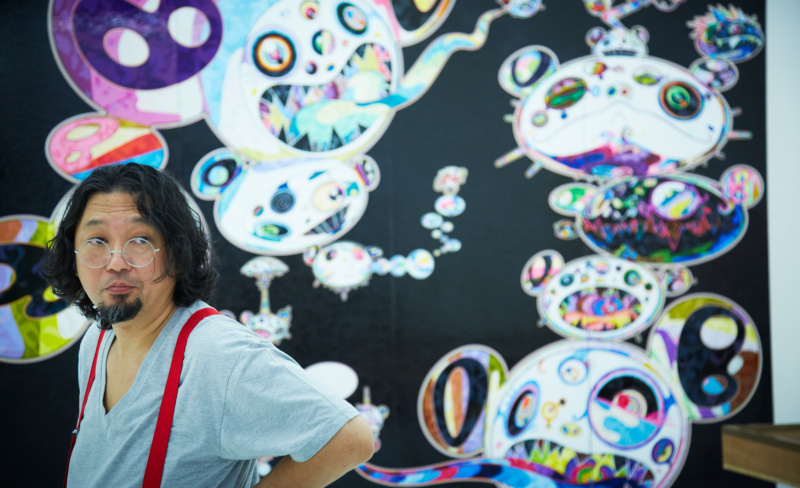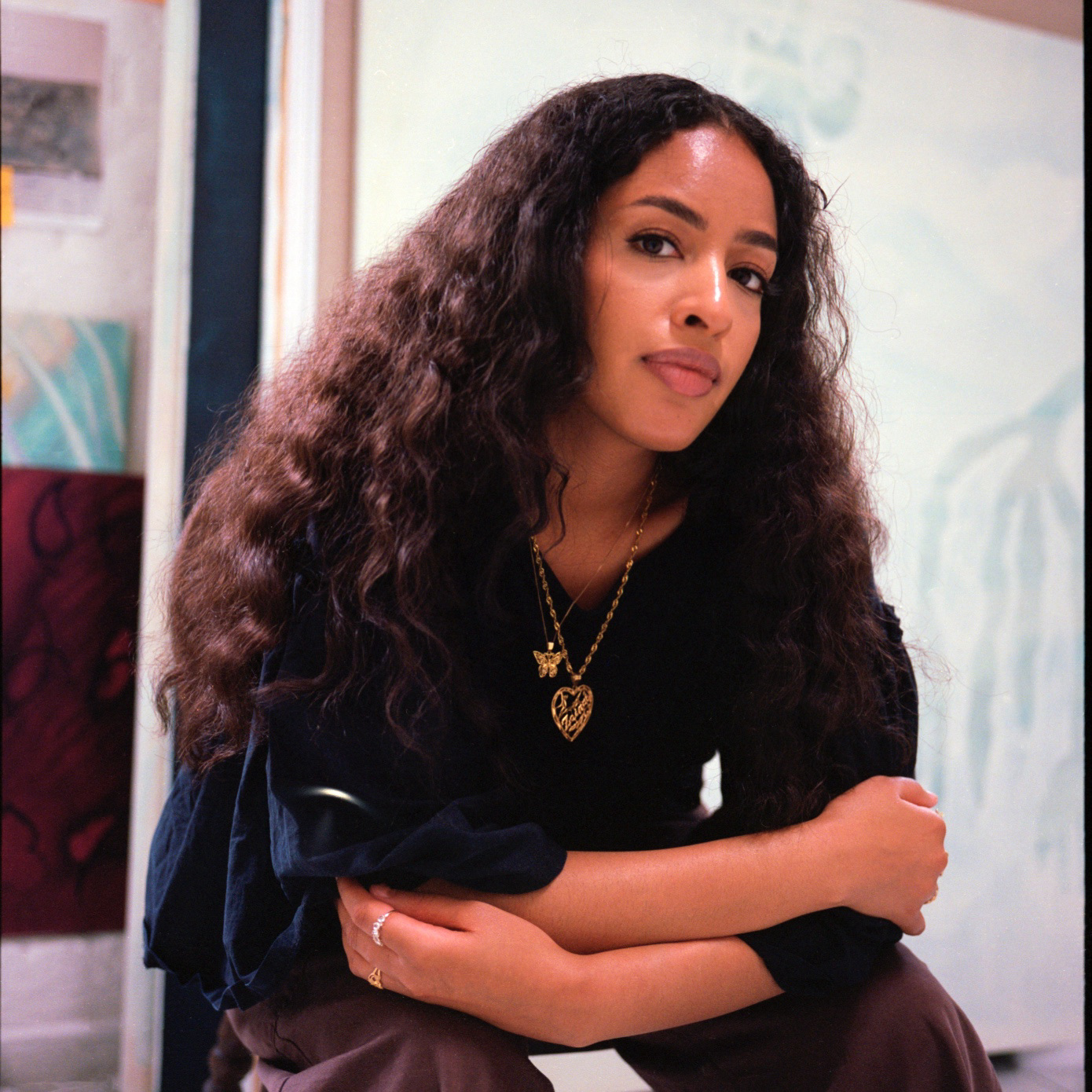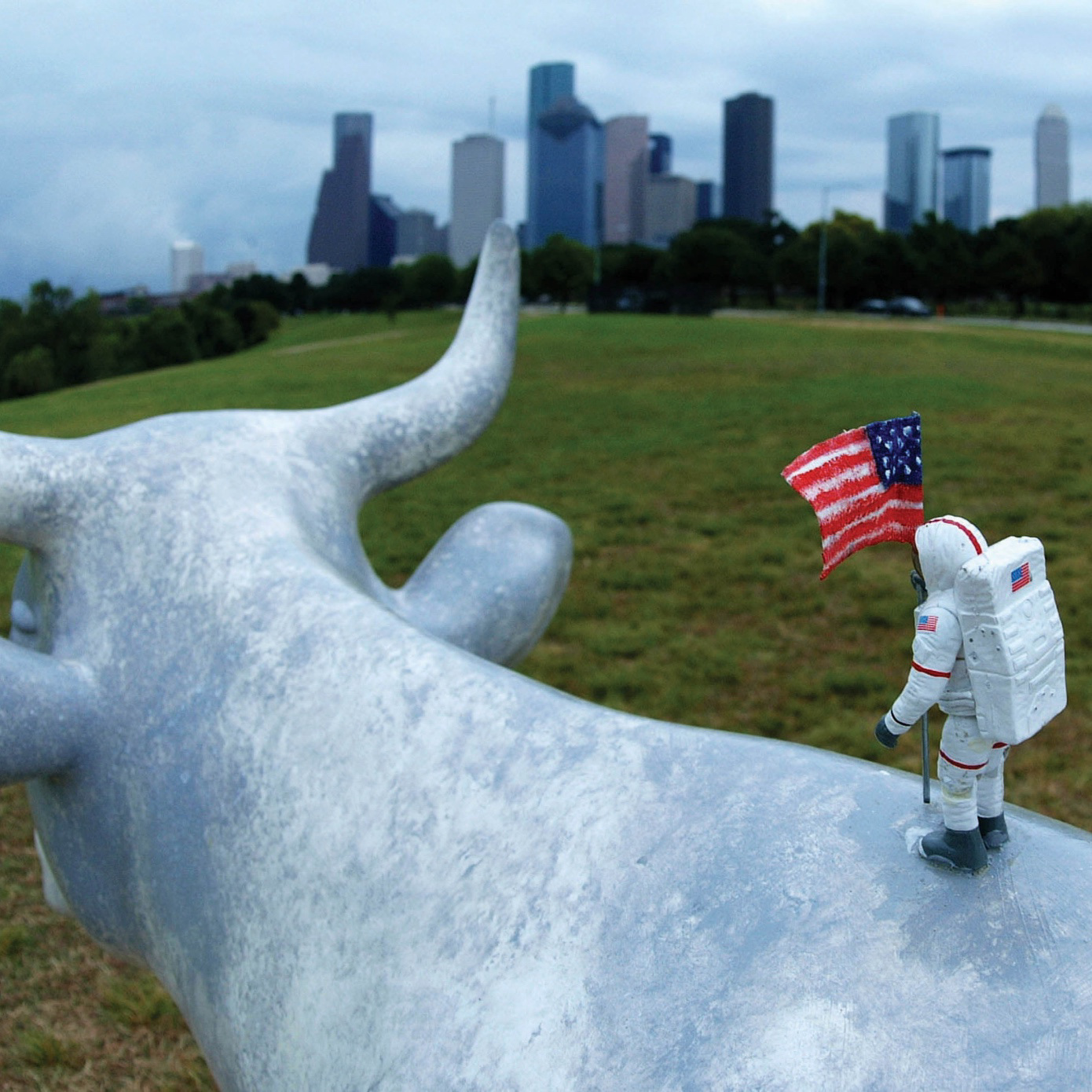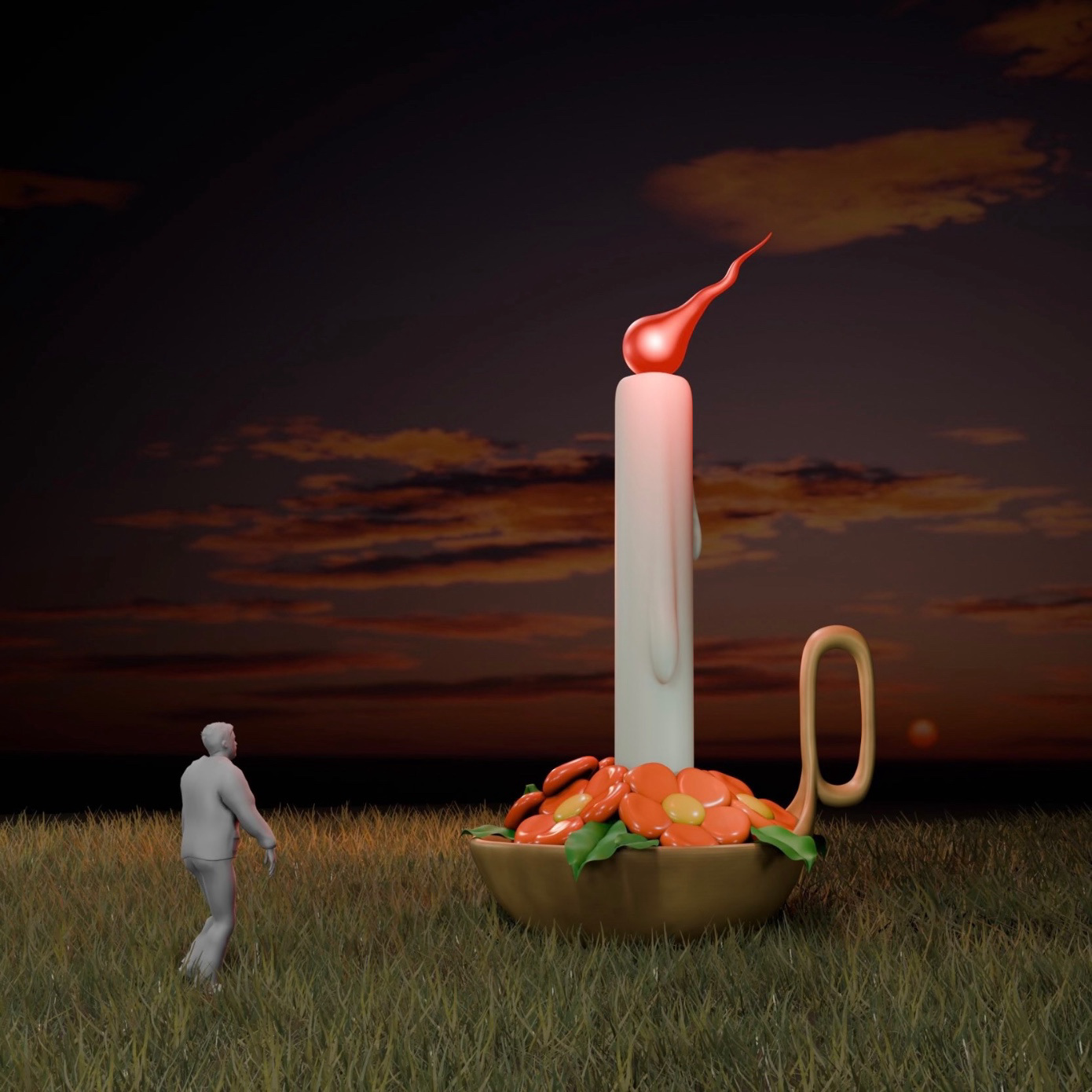
Takashi Murakami is feeling sleepy but jubilant. It’s a brilliant fall day in New York City and the Tokyo-based artist is rubbing his eyes in the sunlit Gagosian Gallery on West 24th Street. Murakami, who is often called the Andy Warhol of the East and has collaborated with the likes of Marc Jacobs for Louis Vuitton, Pharrell Williams and Kanye West, has spent the last three weeks installing “In the Land of the Dead, Stepping on the Tail of a Rainbow.” He comes off casual, wearing a camo-print long-sleeve shirt, a green Patagonia down vest, loose tan trousers, his signature man bun and an easy smile. His new works though, “a culmination of his decade-long study and research of the Japanese art renaissance,” he says, are anything but.
The exhibition, which opened in November—during the height of the coveted New York Art Week—seamlessly intertwines religious tropes, superstition and chaos. To enter, viewers must walk through an immense 56-ton wooden gate that film buffs might liken to the structure in Akira Kurosawa’s “Rashomon.” In fact, it’s somewhat of a related prop, Murakami says. “The guy I worked with to create the piece, his teacher was the ‘Rashomon’ gate creator.” Past that, two immense sculptures, muscular versions of the traditional Japanese blue-and-red demons, seem to guard the paintings. With bulging biceps and whittled six-packs, the steroid demons appear both menacing and cartoonish. “I was contemplating the history of the idea of physical beauty—from Japan’s first art renaissance 600 years ago to bodybuilding and video-game culture and things like that,” Murakami says, “and also, the history of fear.” You can throw in technology to that as well. To form the figures, Murakami used computer graphics with sculpture for the first time. “Everything is an evolution,” he says. He would start with a small clay rendition, scan the object and then work with the data. “It was a lot of back and forth after. The process is very creative for me.”

His paintings, though, form the bulk of the show. He may dabble in film and collaborations to refresh his creative energies, but, “I’m first and foremost a painter,” he says, walking toward the central gallery that represents something of a personal acme. Several of the room-spanning canvases feature arhats or hermetic sages with healing powers, which were imported from China once upon a time and later interpreted or misinterpreted by Japanese culture. Of course, Murakami, who says he is religious but not in the traditional sense of the word (“Maybe I believe in UFOs or something”), puts his own appealing spin on the “gods” by inventing modern-day arhats (perhaps one to cure social media addiction?).
The room is dominated by The Birth Cry of a Universe, a ceiling-high multi-headed monster coated with gold leaf. Like so many of Murakami’s creations, it’s simultaneously kawaii (cute), terrifying and irresistible. The sculpture was eight years in the making, representing the chaos of his imagination. “It was super-painful how long it took; it was a process,” he says. Along with this personal totem, each painting took over two years to complete. “There was immense concentration for this show because this is my dream site,” the artist says. More than 10 years ago, he saw a Damien Hirst show in the gallery and was wowed by the space. “I couldn’t do the large-scale exhibition then because I didn’t have the production power,” he says. “So for the past two years, all we did was focus on this show. We employed about 100 people.”
It also gave Murakami time to stew over every detail and contemplate every composition. “The works can’t be any better,” he says. “I’ve put in all sorts of information. I’ve packed them into the paintings or I’ve stripped them down. I feel very, very confident about them. As a Japanese artist who has studied and pursued contemporary art, this is the sort of presentation, the answer, of how a Japanese artist can fit into the contemporary art world.”




